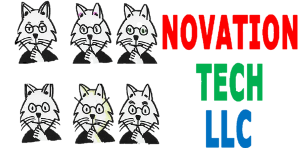
Not a game — or even a simulation of real life training – PITCHvr™ Vision supplements and complements on-field training to develop and hone extraordinary skills. It uses the presentation of conditions that can only be created virtually, specifically improving human performance traits that occur over the fraction of a second. PITCHvr™ Vision uses staircase adaptive training to optimally advance the player’s skill level, and gauges their hitting performance over time.
The PITCHvr™ system can model any pitch realistically in the simulator using second-order, non-linear differential equation models. These take into account the effects of gravity, drag, and lift, and the position, spin axis, velocity, and acceleration of the pitched ball versus time are realistically created.
Previous research1 has demonstrated that training outcomes are improved when practice is designed so that the task difficulty is appropriately matched to the performer’s skill level. “Leave your ego at the door!” In PITCHvr™, a staircase adaptive training approach is implemented where performance-based adjustments of various pitch parameters (speed, type of pitch, location, etc.) are employed to make the training level optimal for each user since the task difficulty is appropriately matched to the user’s skill level.
PITCHvr™ Vision trains and evaluates serious baseball players in pitch type recognition, strike zone (K Zone) location recognition, and pitch trajectory. Training Mode includes all ball and pitch tracking features; Evaluation Mode tests the player’s newly trained skills with no such guidelines.
Features include:
- Immersive training in a ballpark with realistic dimensions
- A realistic pitcher avatar, throwing 4 main types of pitches with multiple variations
- Fastball
- Curveball
- Slider
- Change up
- Three available levels of pitching datasets: high school, college, and pro
- User selects the initial degree of difficulty, but the system adjusts to the player’s actual performance level using staircase adaptive training
- User can set personalized strike zones, accounting for height variability
- User selections for bat length, handedness of batter, and handedness of pitcher
- User selects from multiple pitch combinations which consider spin mirroring
- Animations show the pitcher’s finger position as the pitch is being released
- Training mode employs 3D graphics to indicate pitch release point and tunnel zone
- User selections for type of baseball including:
- size (standard 3 inch or more difficult 2 inch diameter)
- color coded balls (denoting type of pitch)
- seam thickness
- graphics on the baseball (spin arrows) to highlight spin rate and directions
- Patented Soundscapes™ technology embedded in the animation train the player’s brain to assess speed, type, and position of ball in-flight
- Patented Eye Sync™ technology trains the user to better track the trajectory of the pitch and spin of the ball by allowing them to repeatedly replay the pitch forward and backward
- Several techniques are employed in evaluation mode including strobed pitches, where the ball vanishes on the way to the plate, and use of different sized balls
- The Coach / Trainer’s view on the computer monitor shows a split screen with the catcher’s view and the pitcher’s view of each pitch and swing
- Pitch by pitch reports on the batter’s reactions provided at the end of each session for player and trainer review
- Leader boards help players keep track of their progress and compete against others
PITCHvr™ is patented technology, US 10,864,422 & US 11,331,551.
User manuals are available for Oculus Rift S, Oculus Quest 2, and HTC Vive virtual reality headsets.
See Training Mode in action below; be sure to listen for the Soundscapes™ sensory aids. Please note: the “bat handle” as shown in the live video is a non-required, optional accessory. Your basic VR controller can be used just as effectively.
Click for purchase options.
